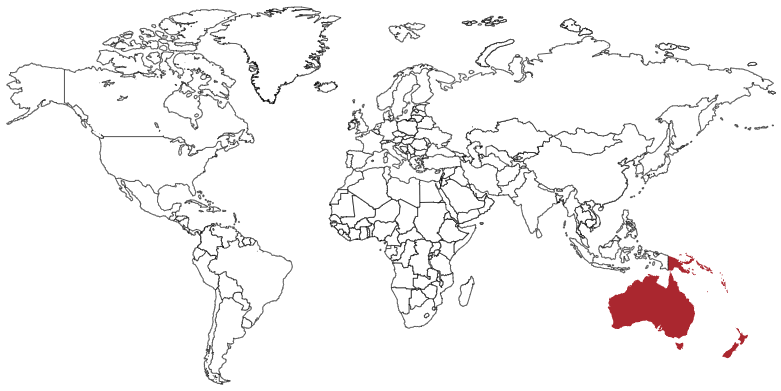Salmonella in Oceania
Reported cases of foodborne infections increased between 1991 and 1998. This is probably due to improved diagnosis and reporting of cases. A real increase may have been caused by the greater consumption of pre-packaged and take-away foods. These foods may carry a higher risk of causing Salmonella infection.the number of Salmonella cases reported has been steadily declining since 1991. S. Enteritidis and S. Typhimurium are common causes of salmonellosis globally.

Australia
Salmonella in humans
Since 1998 levels of Salmonella infections have remained fairly constant.
The most common serotypes isolated from humans are:
- S. Typhimurium (22%)
- S. Enteritidis – mostly found in people returning from overseas.
Salmonella in Poultry
S. Enteritidis is not endemic in Australian chicken flocks. High numbers of S. Sofia (60% of all Salmonellas isolated) are found in poultry. It is thought that this serotype may be protective and competitively exclude S. Enteritidis. S. Sofia is thought to be non-pathogenic to humans.
New Zealand
Salmonella in humans
S. Typhimurium DT106 is the most commonly isolated serotype from human and non-human sources. There is a reservoir of infection in wild birds that facilitates the rapid spread of the serotype.
Salmonella in poultry
The predominant serotypes in poultry are:
- S. Typhimurium.
- S. Agona.
- S. Infantis.
- S. Brandenberg.
